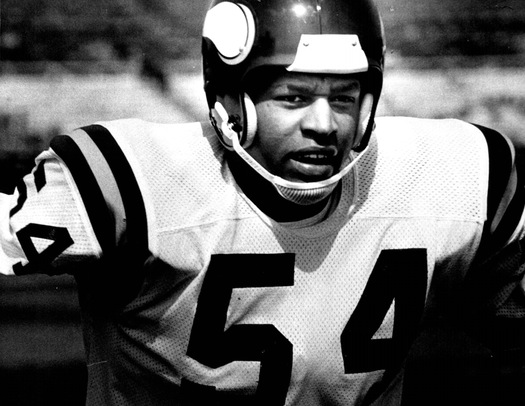Thursday saw significant questions raised about NFL-funded concussion research, but it also saw a potentially huge breakthrough in the field. That would be the confirmation that former long-time Vikings’ linebacker Fred McNeill, who died at 63 in November, had the degenerative brain disease known as chronic traumatic encephalopathy, or CTE.
What sets McNeill apart from the over 100 other ormer NFL players found to have had CTE, including the news this week about Kenny Stabler and Earl Morrall? His CTE was diagnosed while he was still alive, using a pioneering new technique from a group based at UCLA, and as he’s the first member of that group to die, the post-death confirmation that he had CTE provides potentially a huge step towards the “holy grail” of CTE diagnosis in the living. From William Weinbaum of ESPN’s Outside The Lines, here’s why this matters so much:
One of the researchers, Dr. Bennet Omalu, told Outside the Lines this is the first time such a correlation between UCLA’s experimental testing and a posthumous examination has been seen. McNeill is the first ex-NFL player in the study to have died.
Of the 14 former players in the study — a group that includes Hall of Famers Tony Dorsett and Joe DeLamielleure — all had suffered concussions in their playing days, and all were found to have signs of CTE in the UCLA testing that began in 2012.
Many scientists attribute CTE to repetitive brain injuries and consider it a cause of memory loss, dementia and depression. A definitive diagnosis is possible only after an autopsy, but various efforts are underway to diagnose it in the living. In the UCLA study, positron emission tomography, or PET scans, and the chemical marker FDDNP are used to measure the abnormal brain proteins associated with CTE.
“Finding CTE after autopsy, correlated with a scan finding it during life, is a huge step forward to our understanding of CTE,” neurosurgeon Julian Bailes, another of the UCLA study’s researchers, told Outside the Lines.
Bailes and Omalu said they and their colleagues expect to publish the findings and conduct further testing, while pursuing the first FDA approval of a diagnostic method for CTE in the living..
Those names will be familiar to anyone who’s seen Concussion, as Omalu and Bailes are pioneers in the field and were key characters in the movie, played by Will Smith and Alec Baldwin respectively. Their research with this UCLA group has been extremely promising, finding CTE’s characteristic tau protein buildups for the first time, and McNeill’s death gives them correlation between their methods and between autopsy-determined CTE. This is only one data point, and further testing and results will undoubtedly be needed before FDA approval, but the diagnosis of CTE in the living is a huge and important goal.
One of the big hurdles in NFL concussion litigation has been the need to prove former players are suffering while they’re living, and it’s notable that the settlement that has been reached won’t provide Stabler’s family with any money; he had symptoms consistent with CTE while he was living, but his death and autopsy came after the only window (Jan. 1, 2006 to April 22, 2015) in which CTE would be compensated. An ability to reliably diagnose CTE in the living would not only help properly treat those who suffer from it, but also could potentially aid their claims against the NFL. Thus, McNeill’s death and diagnosis may be remembered as a huge moment in concussion science.
McNeill had a remarkable NFL career, spending all of his 12 seasons with the Vikings from 1974-1985 after being drafted in the first round out of UCLA. He played in two of the team’s four Super Bowl losses, in 1975 and 1977, and became the first player to block a punt from Hall of Fame punter Ray Guy in 1977. He racked up over 1,000 tackles over his career, and went on to a successful post-NFL career as a lawyer, beginning his legal studies in his final season. However, he suffered severe cognitive problems after his career, and lost his job at a Minnesota law firm in 1996 as a result. He spent over 20 years as a lawyer, but things got harder for him as time went on, and he was formally diagnosed with dementia in 2009. He also began suffering from ALS, and died of complications from that disease in November. McNeill long believed football left an impact on him, and this diagnosis is another step towards proving that. It may also turn into a major benefit for other former NFLers.







